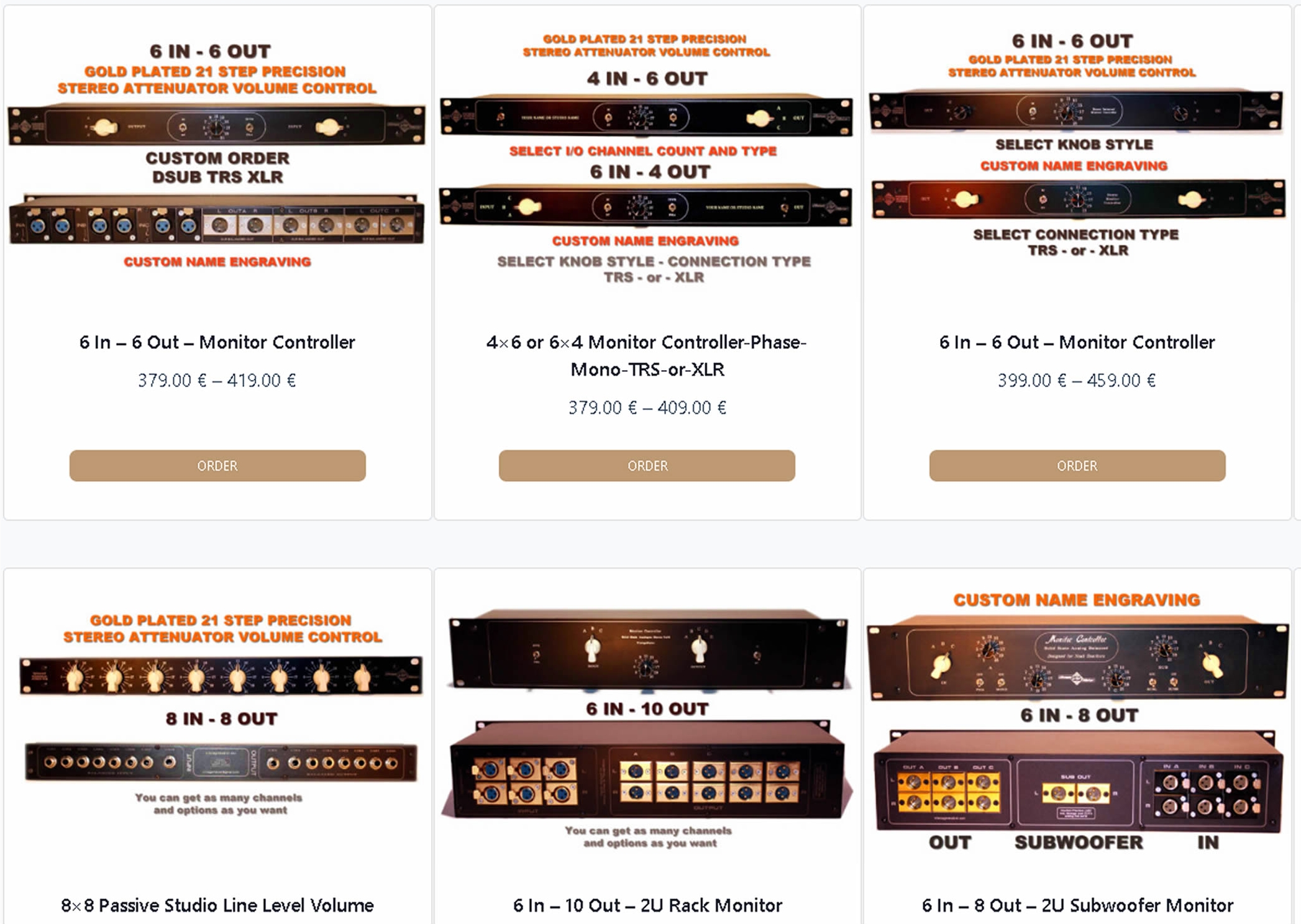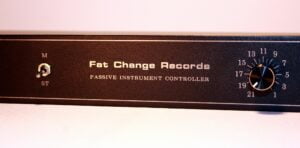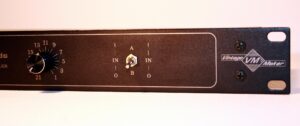Studio Monitor Volume Controller – Audio Line Switcher
Rack mounted Audio Studio Monitor Volume Controller – Audio Line Switcher
Crystal clear sound, no stereo crosstalk, no stereo image collapse, not affect the stereo image, dual stereo balanced signal path, fully balanced from input to output, no relation / connection between L/R sides.
Do not find your Studio Gear? Don’t worry! Just inform me about your requirements!
Request professional assistance to construct your studio equipment. Feel free to ask!
Designed and hand built by VintageMaker the Studio Monitor Volume Controller for DAW signal routing volume gain control for monitors or speakers with no-compromise crystal clear sound isolated by discrete dual stereo solid state circuit. No stereo crosstalk because there is No connection between L/R sides. Very high custom build and sound quality. Offers the easy way to transmit an audio signal via desktop or racked unit to preferred pair of studio or reference monitors. Rackmount Speaker Switch Select – Audio Line Router – Switcher – Phase Invert – Mute Mono – Precision Attenuator Control for Mackie, Adam Audio, Avantone, Focal, JBL, KRK, M-Audio, Neumann, Presonus, Swissonic, Yamaha, Genelec, PSI Audio, KS Digital, Dynaudio, Subzero, IK Multimedia
Passive Instrument Controller
Studio Monitor Controllers
Most engineers start their home studios with a simple recording interface. When you’ve only got two inputs, a couple monitors and a set of headphones, it’s relatively easy to manage where the signal goes.
As you bring in more gear and evolve your studio space, you’ll soon come to realize that you’ve quickly outgrown this style of set-up. With expansion, it can become more difficult to route the signal where you want it to go. Here comes the Studio Monitor Volume Controller – Audio Line Switcher.
Speaker Selection
Many engineers choose to include multiple sets of monitors in their studio. It’s not uncommon to see professional recording studios feature a pair of near-field monitors, a pair of far-field monitors, and one or two small cube-style monitors.
These different sets of monitors each have their own quirks, and allow you to hear how a track translates to different types of speakers. Rick Rubin famously keeps an old-school boombox in his studio for reference.
Studio Monitor Volume Controllers typically feature multiple outputs so you can toggle between monitors with ease. Without a monitor controller switcher, you’d have to crawl behind your desk and reconfigure your output connections manually.
source: https://vintageking.com/blog/2018/01/monitor-controllers/
Input Selection
Monitor controllers feature additional inputs.
These are typically used to monitor something other than your DAW through your studio monitors.
This feature is most commonly used to connect and monitor external playback devices — anything from a CD player, to a tape machine, to your phone!
Different monitors
One of the main reasons to buy a studio monitor controller is that you can switch between different monitors at the touch of a button. This can be very useful if you are working on a mix or tune an EQ, you can then experience with a push of a button how it sounds on another set of speakers – very good as reference material! I recommend switching between monitors at different times so that the reference is just as possible. Pay attention to how many monitors you want to connect and perhaps you can choose an old Logitech set as option B, so you can also experience that sound as a reference on the mix. Depending on the controller you can connect 1, 2 or more sets of studio monitors.
Mono mix
When mixing and listening to music, it can be useful to listen to it in mono. Many audio systems, for example on the radio, in clubs and at festivals, are mono. Does your mix sound bad on mono instead of stereo? Then you might not be able to give the quality you want at different locations. With a monitor controller, you can easily switch your system to mono at the push of a button. Mono puts both audio tracks right and left on a track, which we call mono. So that both speakers reinforce the same channel. Mixing in mono is a technique that many audio engineers use. More sophisticated systems allow you to mute an individual speaker so that you can detect problems in your mix.
Source: https://insideaudio.net/nl
VintageMaker’s rack-mounted audio Studio Monitor Volume Controller – Audio Line Switcher is the ultimate solution for DAW signal routing and volume gain control. This meticulously crafted device features a bypass selector, audio line router, switcher, phase invert, mute mono, and precision attenuator, making it an indispensable tool for any serious audio engineer. The unit is hand-built using dual stereo solid-state circuits, providing unmatched clarity and isolation for crystal-clear sound. With no connection between the left and right sides, you’ll experience zero stereo crosstalk. This high-quality controller is perfect for transmitting audio signals via a desktop or racked unit to your preferred pair of studio or reference monitors.





